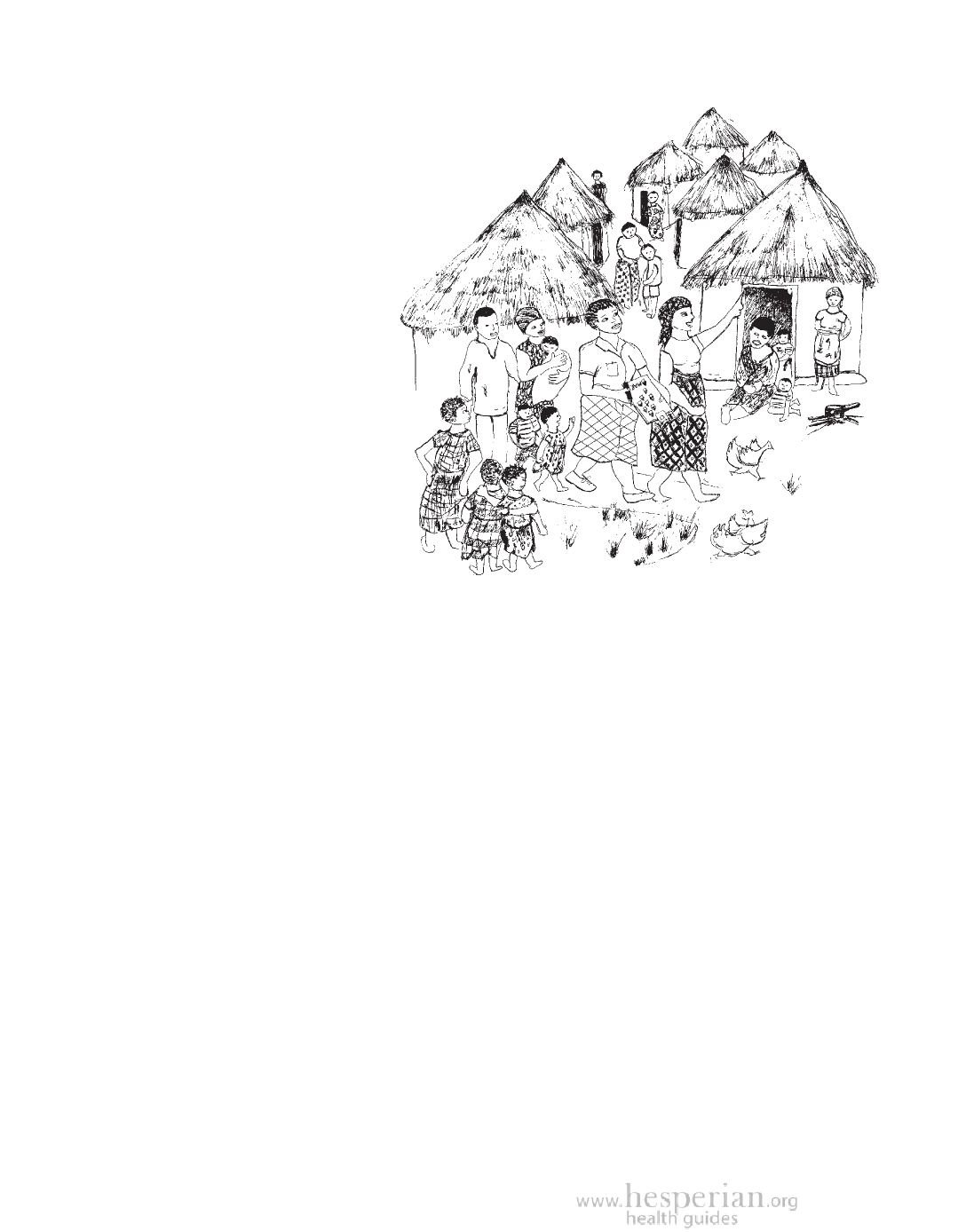
16 Understanding and mobilizing for Communit y Health
Health walks
During a health walk, people take
a closer look at their community.
They try to find things that may
be causing health problems,
such as an unsafe water
source, a polluting business,
or a lack of firewood.
When a health walk is
done as a group, people
share with each other
the different things they
know about problems. Then
they can work together on
possible solutions. The more
people involved, the better.
(For examples of health walks,
see pages 391 and 443.)
Change over time
Another way to understand problems and needs in a community is to compare
conditions now to how it was in the past. Then think about how you would like
it to be in the future. One way to do this is to gather stories from elders in your
community.
Encouraging young people in the community to lead these activities helps
build respect and understanding between the generations. It also helps preserve
those community traditions that everyone wants to keep.
A community timeline can help people understand how changes have
occurred from generation to generation, and take into account significant
events such as a road being paved, a factory opening, a dam being built, and
so on. Mapping environmental changes is another way to share knowledge of
community history through pictures or maps of changes over time in fields,
farms, forests, settlements, rivers and lakes. (For an example, see page 164.)
Drawing activities
Making and looking at drawings can help us see solutions to problems that we
might not see otherwise. Drawings can be used to start guided discussions,
and drawing can be a way for people who cannot read or write well to express
themselves and to participate in group leadership. (For examples of drawing
activities, see pages 50, 54, and 275.)
A Community Guide to Environmental Health 2012